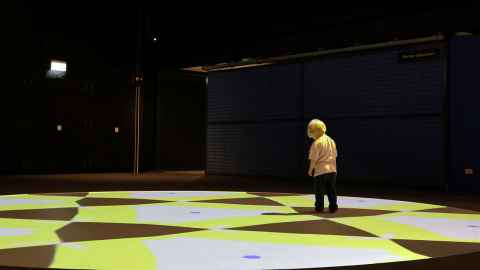Science centre will dazzle tamariki thanks to University staff
28 May 2024
The University of Auckland celebrates the grand opening of the Te Puawānanga Science and Technology Centre.

The Auckland Museum of Transport and Technology’s innovative and experiential new science centre got a big helping hand from science staff at Waipapa Taumata Rau, University of Auckland.
Opened on 25 May, MOTAT’s Te Puawānanga Science and Technology Centre lets tamariki engage with science, technology, engineering and mathematics (STEM) via an interactive periodic table, an “energy machine” and a “magic box” for chemistry experiments.
Immersive experiences with light, energy and matter, and a soft-play space for the tiniest tamariki also feature.
Several staff members helped with advice.
Dr Nicolette Rattenbury, of the Department of Mathematics, worked for nearly two years as a general adviser, and on a “pattern projection” project to let students play with reflections, and patterns such as tessellations and fractals.
“I’m so blown away by what they’ve achieved in such a short period of time. It’s great to be able to inspire the next generation of scientists,” she says.

Professor Duncan McGillivray and Dr Joel Rindelaub from the School of Chemical Sciences and Dr Jami Shepherd from the Department of Physics also helped.
Duncan says, “It’s very exciting seeing them come to life. The University has long been involved in working with MOTAT promoting science to the community - primarily through the MOTAT science fairs. I’m hoping that this new space will give us more chances to work together.”
The names of the key spaces, ‘Te Waha,’ ‘Te Puku’ and ‘Te Tumu’ and the centre name ‘Te Puawānanga,’ were gifted by Ngāti Whātua Ōrākei. Te Puawānanga is New Zealand’s native climbing vine, also known as the clematis flower, symbolising the blossoming of knowledge.